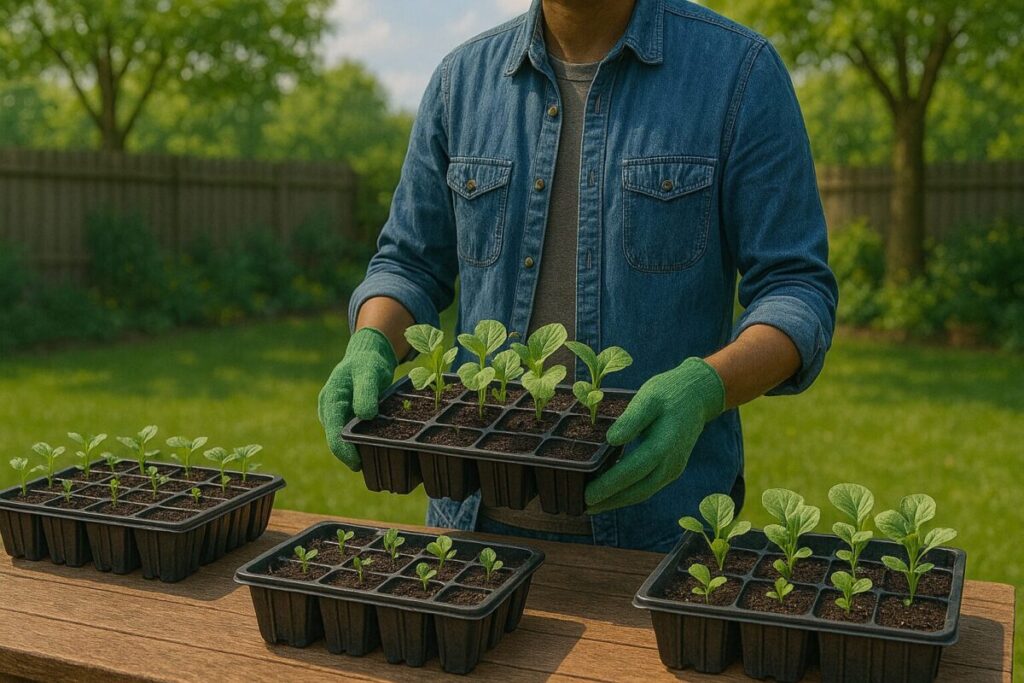If you’ve ever grown seedlings indoors, you know how exciting it is to watch those tiny sprouts transform into strong, healthy plants. But before you transplant them into the garden, there’s one critical step you can’t skip: hardening off.
What Is Hardening Off?
Hardening off is the gradual process of acclimating indoor-grown seedlings to the outdoor environment. Think of it as plant boot camp—your seedlings have been living in a comfortable, controlled climate with steady light, temperature, and protection from wind or pests. Outside, they’ll face unpredictable weather, stronger sunlight, cooler nights, and wind exposure. Without a proper transition, they may suffer from shock, sunburn, or stunted growth.
Why Hardening Off Matters
Plants, like people, need time to adjust to change. Moving seedlings directly from indoors to your garden is a bit like stepping off a plane from a tropical island into a snowstorm—shocking and stressful.
Hardening off:
– Prevents transplant shock
– Encourages strong stems and root systems
– Improves resistance to wind, sun, and temperature shifts
– Boosts the chances of a thriving, productive plant
When Should You Start Hardening Off Seedlings?
Begin the hardening off process about 7 to 10 days before you plan to transplant your seedlings into the garden. Wait until the risk of frost has passed, and daytime temperatures are consistently above 50°F (10°C). This is especially important for warm-season crops like tomatoes, peppers, and cucumbers.
How to Harden Off Seedlings: Step-by-Step
– Choose the Right Time of Day
Start by placing seedlings outdoors in a shaded, wind-protected area for a few hours in the late morning or early afternoon.
– Increase Time Gradually
Each day, increase the time seedlings spend outside by 1–2 hours. Slowly expose them to more sunlight and wind. Avoid windy, rainy, or extremely cold days during this phase.
– Watch for Signs of Stress
If leaves start to curl, wilt, or change color, scale back and give the plants a rest day indoors.
– Leave Them Out Overnight (Eventually)
After about 7 days of daytime exposure, if temperatures are mild, try leaving your seedlings out overnight. Make sure it doesn’t dip below 50°F unless the plants are cold-hardy (like kale or broccoli).
– Transplant into the Garden
Once your seedlings have spent several full days and nights outdoors and are showing signs of healthy adaptation—stronger stems, vibrant color, and no signs of stress—it’s time to transplant them into their permanent home.
Bonus Tips for Successful Hardening Off
– Use trays or portable containers to make it easier to move seedlings indoors and out.
– Water before setting them out to avoid dehydration in the sun.
– Shelter from strong wind during the early stages to prevent damage.
– Keep a schedule or reminder to stay consistent.
Conclusion
Hardening off seedlings may take a little extra time and effort, but it’s one of the best things you can do to ensure a smooth transition and a successful growing season. Treat it as a vital part of your gardening rhythm—not just an optional step. Your plants will thank you with better growth, more blooms, and a stronger start.
If you found this post helpful, don’t forget to share it and explore more gardening tips on our website!

